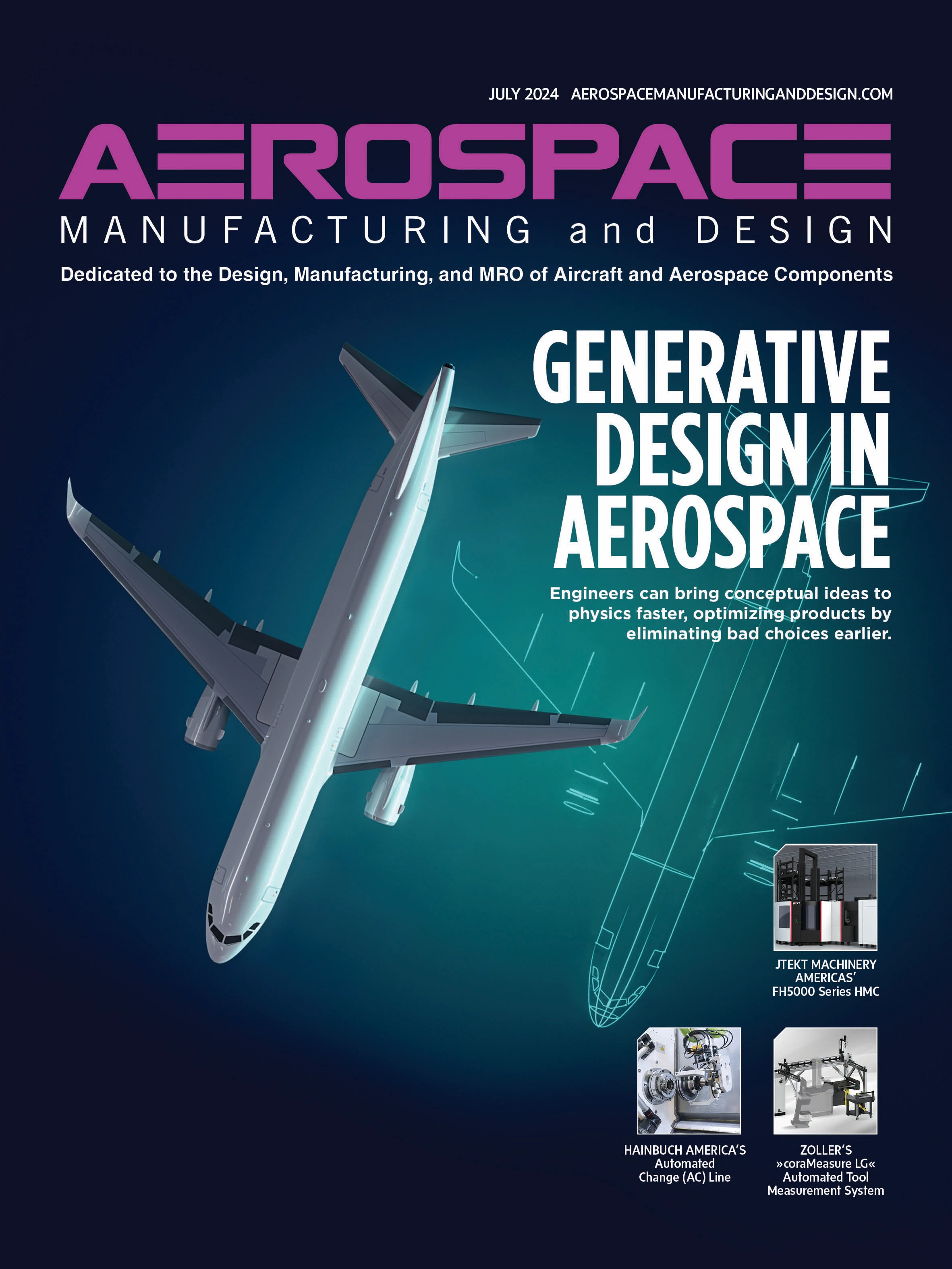
Wichita State University’s (WSU) National Institute for Aviation Research (NIAR) recently partnered with A&P Technology and Fiber Dynamics to build a composite inlet duct for a combat drone aircraft using a novel overbraiding technology.
Researchers with NIAR’s Advanced Technologies Lab for Aerospace Systems (ATLAS) designed the inlet duct as a part of a manufacturing demonstrator called Frankenstein (FS-19), a 30ft unmanned combat aircraft. The project, part of the Air Force Research Laboratory (AFRL) Manufacturing for Affordable Sustainable Composites (MASC) program, is a proof of concept for low-cost, high-rate production worthiness.
“This manufacturing demonstrator is intended to generate a cost model based on manufacturing data that includes various materials and manufacturing and assembly methods, allowing manufacturers to use the information for on-demand flexible manufacturing and assembly of composite structures based on volume, cost, weight, and mission requirements,” says Waruna Seneviratne, ATLAS director.

The complex curvature of the inlet duct demanded a new manufacturing approach. Placement of tows using automated tape-laying is limited due to the radius of curvature; and hand placement of prepreg would result in excessive cutting and splicing. The overbraiding technology was developed by A&P Technology in Cincinnati, Ohio, and identified by AFRL as a key process for high-rate production of aircraft parts. The technology can produce multiple duct preforms per shift.
The demonstrator inlet duct is approximately 8ft long with perimeters ranging from 56.5” to 96.6”. Fiber Dynamics created a melt-out mandrel using its Thermocore Lost Core Tooling System. A&P Technology used this system to overbraid five layers of triaxial braid at a constant thickness of 0.10", resulting in angle changes along the length of the part ranging from 55° to 74°. There were no cuts or splices created during the overbraiding process, and the precise control of the fiber angle provides consistently high part-to-part repeatability.
A&P Technology and Fiber Dynamics are working through the MASC research program to develop a path to certification of overbraided structures. NIAR and A&P Technology previously partnered to generate Federal Aviation Administration (FAA)-approved design allowables for 2x2 biaxial braid for resin transfer molding of control surfaces of a Raytheon Premier I Part 23 business jet. By creating a certification method for a more automated layup process such as overbraiding, MASC continues its efforts to create affordable, sustainable manufacturing methods.
The proposed path to certification includes establishing a one-point certification method that fully qualifies a nominal angle with laminate analysis predictions for angle changes, such as advanced fiber placement techniques and laminate plate theory rotations of flat fabrics. Once qualified, predictions will be validated through simplified bridge testing of predicted properties at various angles.
Wichita State University, National Institute for Aviation Research

Explore the July 2024 Issue
Check out more from this issue and find your next story to read.
Latest from Aerospace Manufacturing and Design
- DEMGY Group acquires Tool-Gauge
- OES’ dual-axis yaw pitch stages
- Mastering high-temp alloys with Kennametal Inc.
- Boeing to sell portions of digital aviation solutions
- SMW-Autoblok’s KNCS-matic 3-jaw power chuck
- 3 Questions with an Expert with Allied Machine & Engineering
- Electra raises $115M to pioneer Ultra Short aircraft
- Walter’s WT26 partial- and full-profile thread turning inserts





